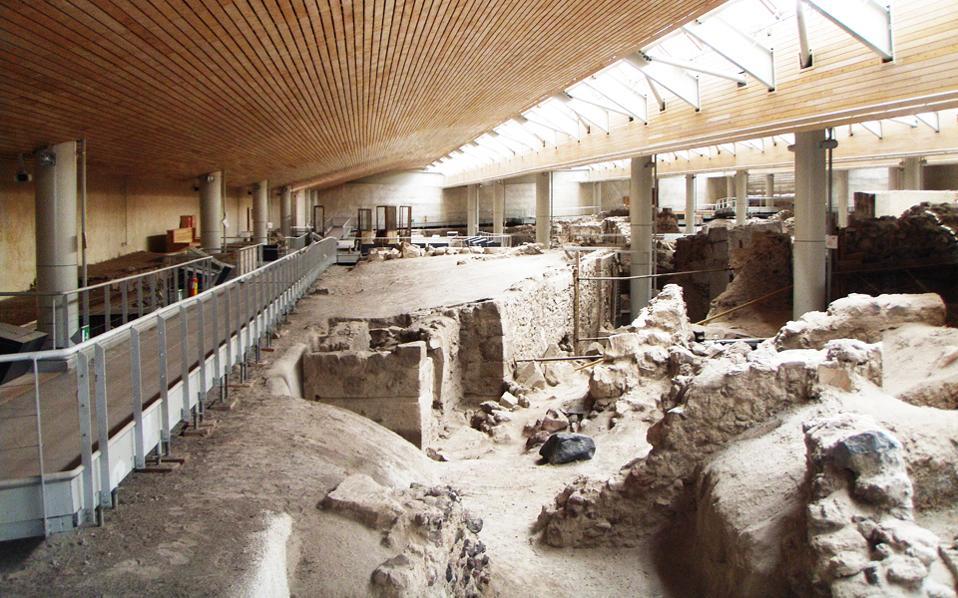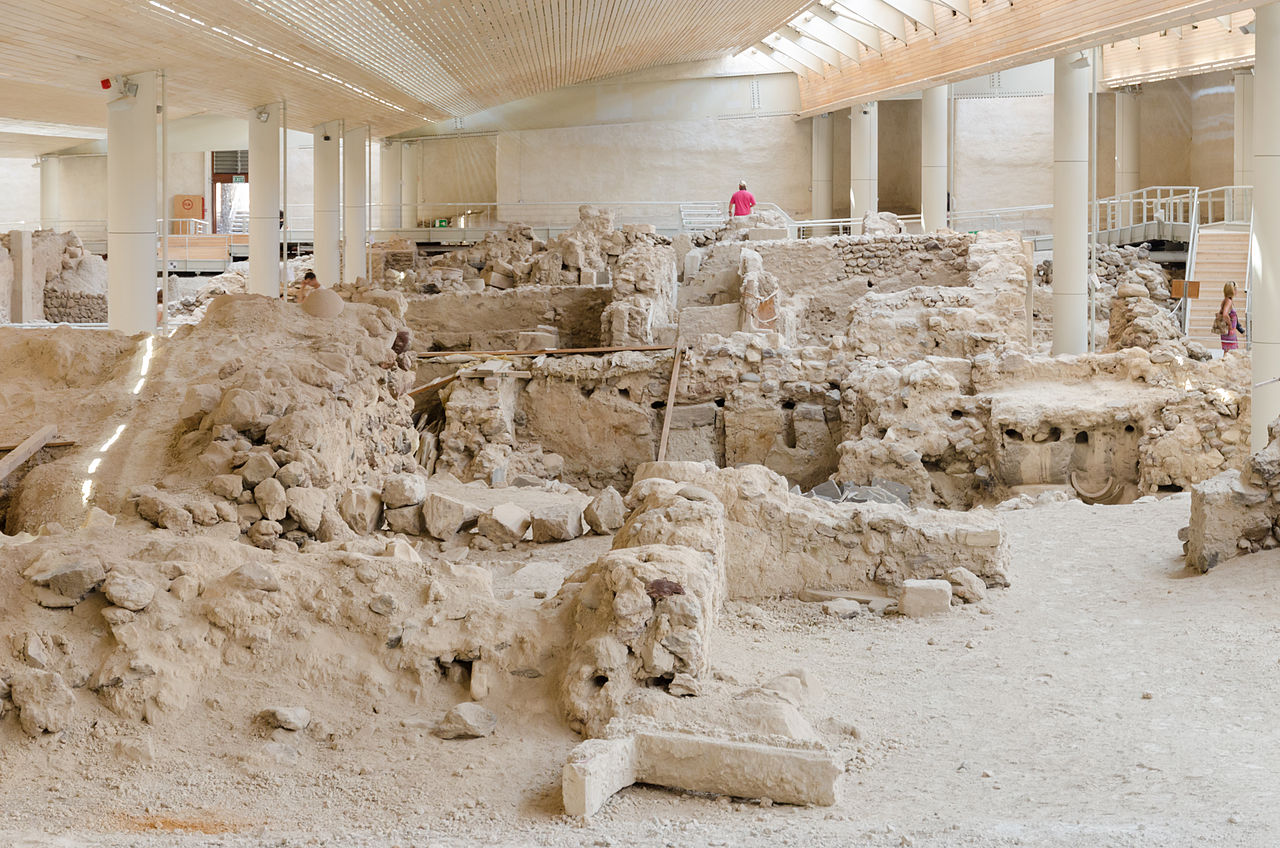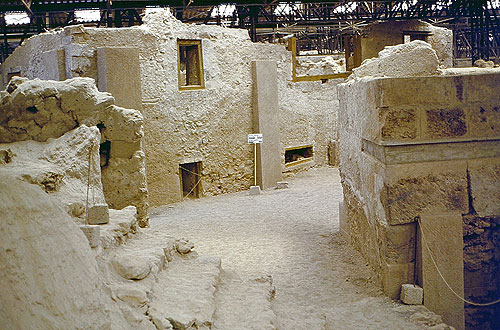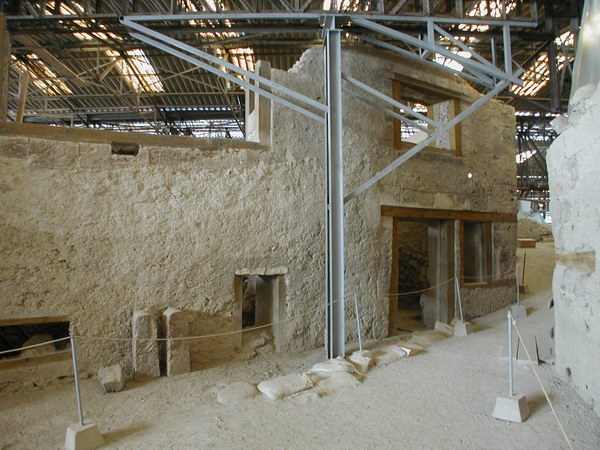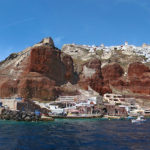Akrotiri Excavation
Archaeological researches had already started in the 19th century. The eminent Greek archeologist Spyridon Marinatos started the excavations in Akrotiri in 1967, in order to prove his theory that the collapse of the Minoan civilization was due to the massive volcanic eruption of Santorini. He went on until his death in 1974, when the archaeologist Christos Doumas took over and till today he continues his work with remarkable results.
The prehistoric city of Akrotiri was the center of a brilliant civilization that reached its heyday between 1550-1500 BC. It was inhabited from the Neolithic Age to 1500 BC, when a devastating eruption destroyed everything. The wealth and the quality of houses bear testament to the city’s prosperity and a flourishing way of life. The sophisticated houses were spacious, multistoried, made of stones and mud and they were accordant to the Cycladic architecture. The upper stories had large windows and imposing murals, whereas the basements were used as storerooms and workshops. Along the city, there were narrow, stone-paved streets, squares and an elaborate drainage system.
Until today the excavations have revealed only a part of the prehistoric settlement. Nowadays, the archaeological site of Akrotiri, which lies on the southwestern tip of Santorini, gives visitors the opportunity to admire and walk through the sheltered settlement. Furthermore, significant finds from Akrotiri are exhibited in the Museum of Prehistoric Thera in Fira, such as pottery, jewelry, marble figurines, tools, utensils and impressive wall paintings. Some famous frescoes can also be admired in the National Archaeological Museum, in Athens. A visit to the museum but, more importantly, to the archaeological site of Akrotiri constitutes a unique experience and can transfer visitors to the distant past.

